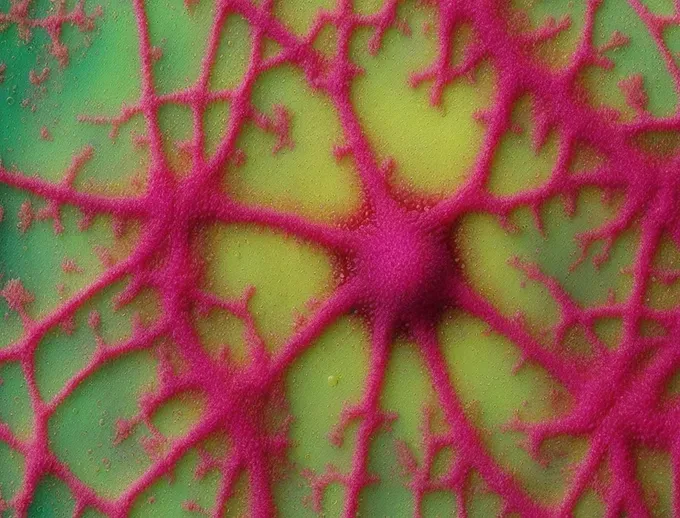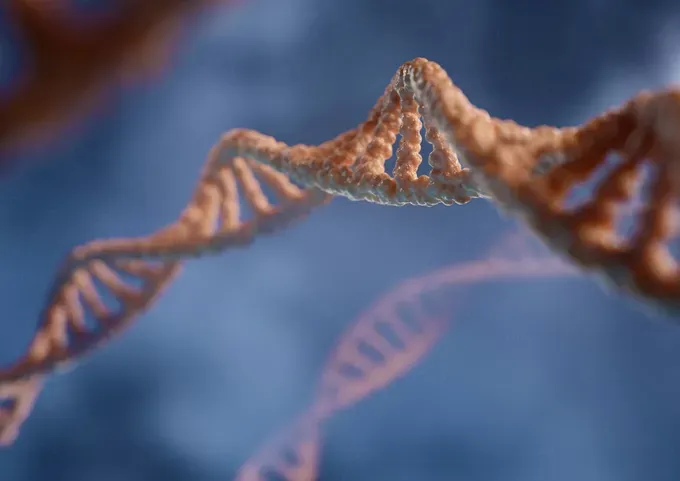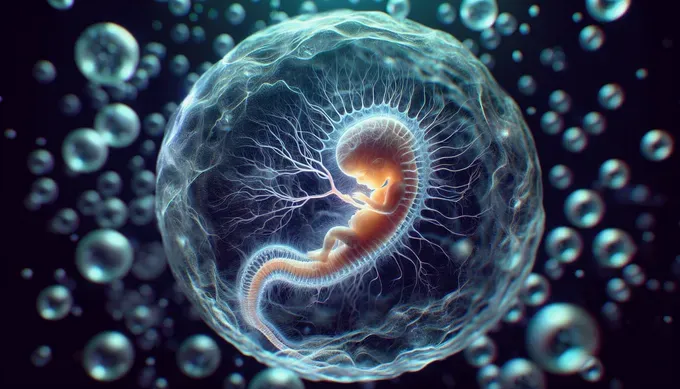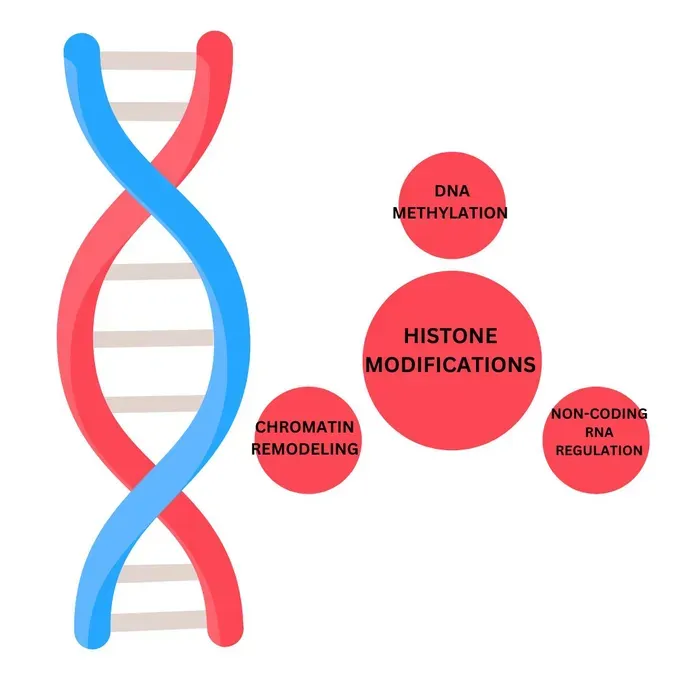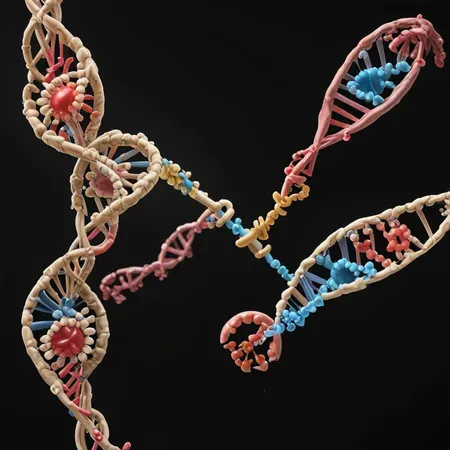Understanding Neural Crest Formation: A High Level Review
Neural Cells
Table Of Contents
- Understanding Neural Crest Formation: A High Level Review
- Neural Crest Development
- What is the Neural Crest?
- Neural Crest Formation Initiates in the Neural Ectoderm
- An Overview of Neural Crest Formation
- Mechanisms Underlying Neural Crest Formation
- The Role of Neural Crest in Development
- Key Processes in Neural Crest Formation
- Induction of Neural Crest Cells
- Molecular Mechanisms
- Factors Influencing Induction
- Neural Plate Border Specifiers and Their Function
- Neural Crest Specifiers - A Detailed View
- Migration of Neural Crest Cells
- Delamination - The Beginning of Migration
- Different Paths Taken by Migrating Cells
- Clinical Relevance of Neural Crest Cells
- How Neural Crest Cells Influence Waardenburg's Syndrome
- The Link Between Neural Crest Cells and Hirschsprung's Disease
- Neural Crest Cells and Fetal Alcohol Spectrum Disorder
- Neural Crest Cells' Role in DiGeorge Syndrome
- Lineages Derived from Neural Crest Cells
- Cranial Neural Crest Lineage
- Trunk Neural Crest Lineage
- Vagal and Sacral Neural Crest Lineage
Understanding Neural Crest Formation For Parents and Students
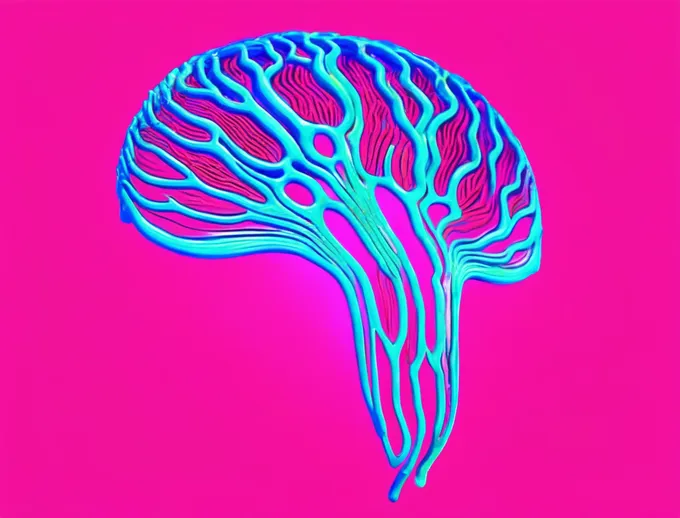
Neural Crest Development
What is the Neural Crest?
The neural crest is a group of cells that forms along the border between the neural tube and the surface ectoderm during embryonic development. Its function is to give rise to various cell types, including neurons, glial cells, pigment cells, and skeletal components of the head and face.
Have you ever wondered how your nervous system develops? The answer lies in the neural crest cells - a group of cells that form during embryonic development and give rise to a diverse array of cell types, including neurons, glia, pigment cells, and skeletal tissues. In this blog post, we will provide an in-depth overview of neural crest formation and its various stages. We'll dive into the induction of neural crest cells, the migration process, and the clinical relevance of these cells, including their role in certain disorders like Waardenburg's Syndrome and Hirschsprung's Disease. Additionally, we'll explore the different lineages derived from neural crest cells and their evolutionary significance. Lastly, we'll discuss how our understanding of neural crest cells has evolved. So whether you're a student or a researcher in the field of developmental biology or just curious about how life forms develop, this post is for you!
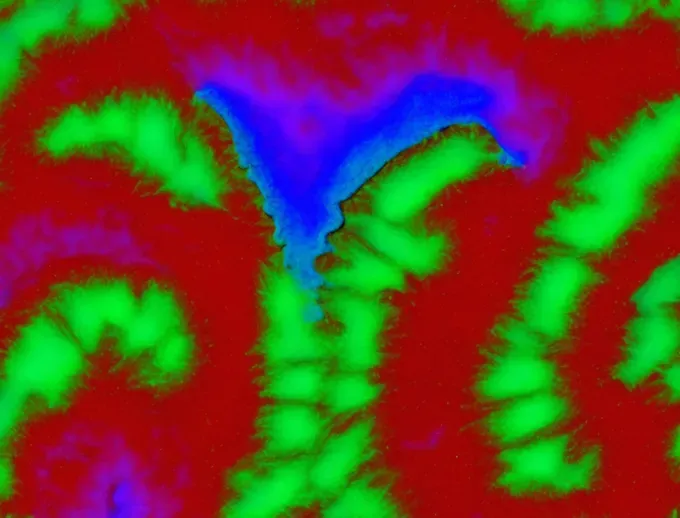
Neural Crest Formation Initiates in the Neural Ectoderm
An Overview of Neural Crest Formation
Neural crest formation initiates in the neural ectoderm during early vertebrate development. Arising from the border of the neural folds, these cells undergo an epithelial-to-mesenchymal transition and migrate extensively to contribute to a diverse array of cell lineages. Neural crest development is intricately linked to the induction of the neural plate border, a critical interaction mediated by various signalling factors. In Xenopus Laevis and chick embryos, the dorsolateral pathway has been identified as a key route for migration, guiding cells toward their final destinations through a series of attractive and repulsive cues.

Mechanisms Underlying Neural Crest Formation
The process of neuronal differentiation and the formation of Schwann cells are essential outcomes of neural crest migration. Notably, disruptions in neural crest gene regulation can result in conditions such as Treacher-Collins syndrome, affecting the development of the second pharyngeal arches. Understanding the mechanisms underlying neural crest formation is crucial for unravelling the pathogenesis of numerous clinical conditions.
The Role of Neural Crest in Development
Playing a crucial role in the development of various tissues and organs, neural crest cells are derived from the neural ectoderm, one of the germ layers. Their ability to contribute to multiple cell lineages makes them vital for neural crest development. During embryogenesis, neural folds at the border of the neural plate give rise to neural crest cells, and in organisms such as Xenopus Laevis, their migration has been extensively studied. In the United States, research on de novo neural crest gene mutations has shed light on their significance in neuronal differentiation and Schwann cell development. Understanding their pathfinding mechanisms, such as the dorsolateral pathway in chick embryos, has provided insights into conditions like Treacher Collins syndrome, linked to defects in the second pharyngeal arches. This highlights the complex roles of neural crest cells in various aspects of embryonic and post-embryonic development, which continue to captivate researchers worldwide.
Key Processes in Neural Crest Formation
During embryonic development, neural crest cells originate from the neural plate border, a region of the developing embryo that is crucial for neural ectoderm and germ layer formation. The induction of these specialized cells is intricately regulated by various signalling pathways and growth factors, orchestrating the complex process of neural crest development. As a result, neural crest cells undergo migration, delamination, and differentiation to form diverse cell lineages, such as Schwann cells, influencing neuronal differentiation and contributing to the second pharyngeal arches' development. The extracellular matrix plays a vital role in providing guidance cues for the migration of neural crest cells along specific paths, including the dorsolateral pathway. Understanding this regulatory network of neural crest formation is not only fundamental for studies in neural development but also holds significant implications in embryonic stem cell research, offering insights into de novo cellular differentiation processes and lineage specification.
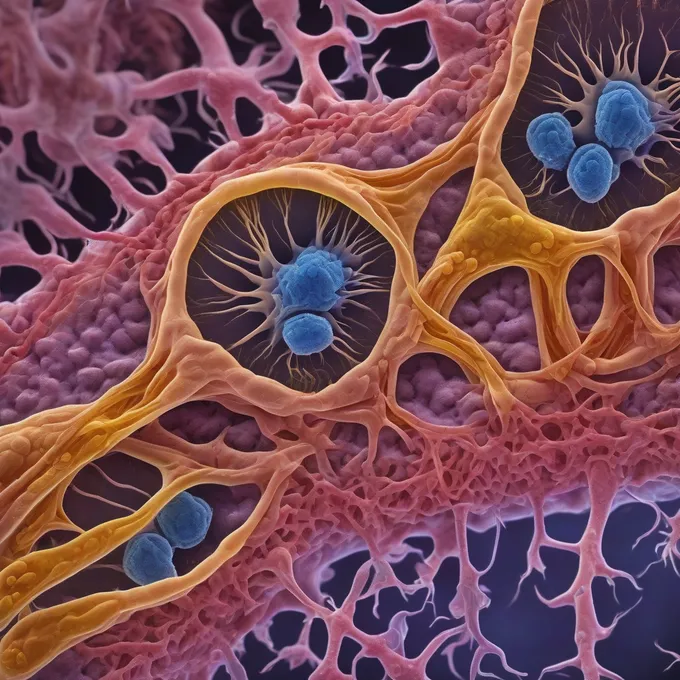
Induction of Neural Crest Cells
Induction of Neural Crest Cells
The induction of neural crest cells involves the activation and migration of neural ectoderm cells from the margins of the neural folds. This process is influenced by various factors, including signalling molecules and transcription factors that play a crucial role in neural crest development and specification. Studies using model organisms such as Xenopus Laevis have provided valuable insights into the molecular mechanisms underlying this process, shedding light on the conserved nature of neural crest induction across species. Additionally, research in the United States has elucidated the role of de novo neural crest gene expression in orchestrating the induction of neural crest cells, ultimately contributing to cell lineage determination and diversification.
The establishment of the neural crest cell population is an intricate event that involves the coordination of multiple signalling pathways, including the dorsolateral pathway, which regulates neuronal differentiation and the formation of diverse derivatives such as Schwann cells. Furthermore, investigations utilizing chick embryo models have uncovered the significance of the second pharyngeal arches in neural crest induction, highlighting the intricate spatiotemporal regulation of this process during embryonic development.
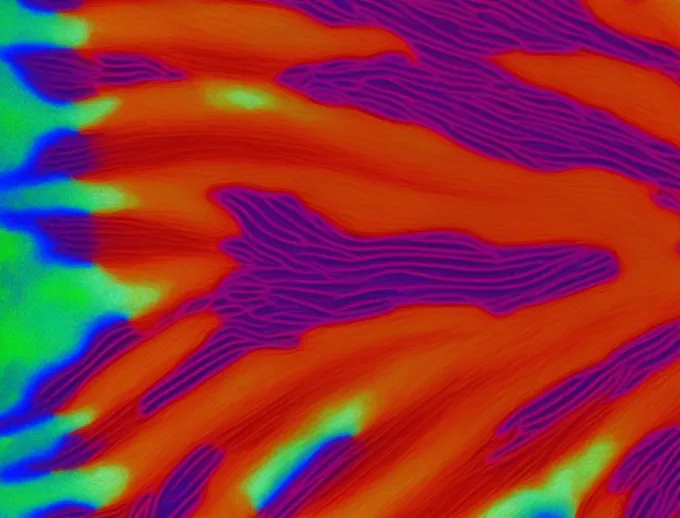
Molecular Mechanisms
Factors Influencing Induction
The induction of neural crest cells is a complex process influenced by various signalling pathways, such as Wnt and BMP. These pathways contribute significantly to the specification of neural crest cells, which is also influenced by the expression of specific gene regulatory networks. The crucial role played by the ectoderm and neural plate border in this induction process cannot be overstated, highlighting the intricate interplay between germ layers during neural development. Additionally, the retinoic acid signalling pathway has been identified as a key factor influencing the induction of neural crest cells, further emphasizing the multifaceted nature of neural crest development.
Understanding the factors that influence the induction of neural crest cells is essential for comprehending embryonic development. It sheds light on the mechanisms underlying neuronal differentiation, cell lineage specification, and the formation of structures such as the second pharyngeal arches. This knowledge has broad implications, ranging from the study of animal models like Xenopus Laevis and chick embryos to understanding human conditions like Treacher Collins syndrome and Schwann cell disorders. By unravelling the complexities of induction, researchers can gain insights into de novo neural crest gene regulation and the dorsolateral pathways involved in neural crest migration and differentiation.
Neural Plate Border Specifiers and Their Function
Regulating the fate and lineage of neural crest cells during embryonic development, neural plate border specifiers play a critical role in differentiating progenitor cells into neural crest cells. Specific gene expression and transcription factors contribute to this specification at the border, crucial for understanding neural crest gene regulation. These specifiers are essential for the development of animal models given their responsibility in specifying neural crest cells during development. It's noteworthy that neuronal differentiation is influenced by the function of these specifiers, illuminating their role in neural development. Understanding the intricate mechanisms behind the function of neural plate border specifiers is imperative for comprehending neural ectoderm development and the formation of cell lineages. Moreover, studying these specifiers sheds light on the complex processes involving germ layers and neural folds, aiding in unveiling the mysteries of neural crest development across different species, such as Xenopus Laevis in the United States.
Neural Crest Specifiers - A Detailed View
In the intricate process of neural crest development, neural crest specifiers, which are critical transcription factors, play a pivotal role. These specifiers are responsible for regulating the expression of specific gene regulatory networks that underlie the specification of neural crest cells. Their involvement is not limited to specification but also extends to the migration and differentiation of these specialized cells during development. The precise regulation of neural crest cell specification is achieved through the expression of specific zinc finger transcription factors, emphasizing the complex nature of this process. An in-depth understanding of neural crest specifiers provides valuable insights into the development of distinct cell lineages within the neural crest, shedding light on the intricate mechanisms governing neural development and cell differentiation.
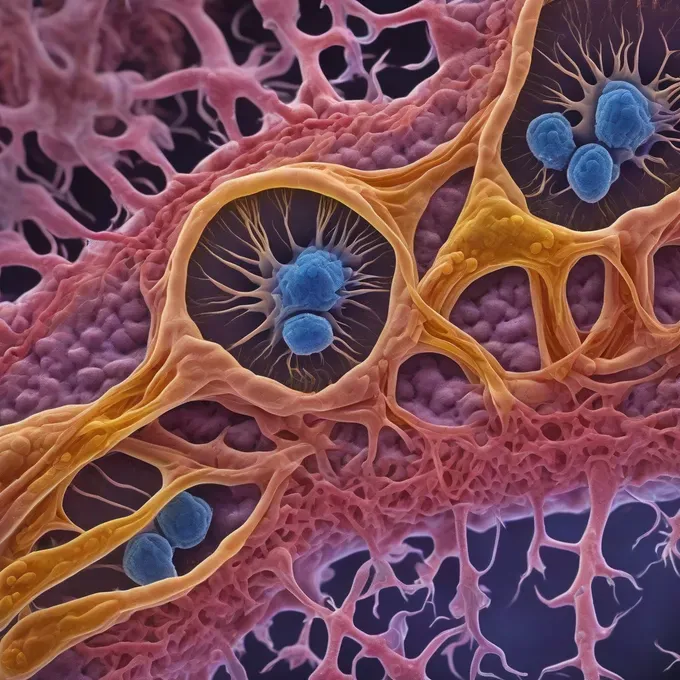
Neural Crest Specifiers
Migration of Neural Crest Cells
Delamination marks the first step of migration. Once delaminated, cells follow distinct migratory paths such as the dorsolateral pathway or the ventromedial pathway. Each path leads to different cell fates, including neuronal differentiation or Schwann cell formation. In Xenopus Laevis and chick embryos, migration is guided by specific cues, while in the United States, research on the topic has intensified since de novo mutations have been linked to neurocristopathies like Treacher Collins Syndrome.
Delamination - The Beginning of Migration
The initiation of migration of cells from the neural ectoderm occurs during delamination, a crucial event in neural crest development. This process begins in the dorsal aspect of the neural folds, where premigratory neural crest cells reside before migrating to their respective germ layer destinations. The molecular intricacies of delamination involve a complex interplay of neural crest genes and extracellular cues, leading to the regulation of cell surface interactions. Moreover, studies using model organisms such as Xenopus Laevis and chick embryos have provided valuable insights into the dorsolateral pathway of delamination and its contribution to neuronal differentiation and the formation of Schwann cells. Understanding the mechanisms behind delamination not only sheds light on neural crest development but also has implications for disorders such as Treacher-Collins syndrome, which are linked to abnormalities in the second pharyngeal arches.
Different Paths Taken by Migrating Cells
Migration of neural crest cells leads to the development of various cell lineages, including cranial, cardiac, and trunk neural crest cells. This complex process involves the differentiation of specific cell types along their migratory paths, which is essential for neural crest development. The specification of cell fate during migration plays a critical role in determining the contribution of neural crest cells to diverse tissue types, highlighting the significance of understanding neural crest gene regulation and neuronal differentiation.
Furthermore, the migration of neural crest cells is influenced by signalling pathways and the extracellular matrix environment, emphasizing the role of the dorsolateral pathway and the interactions between neural folds and the surrounding tissues. Studying these mechanisms provides valuable insights into the molecular and cellular events underlying neural crest cell migration in various model organisms such as Xenopus Laevis and chick embryos. Additionally, elucidating the different migratory paths of neural crest cells is crucial for understanding their contribution to tissue development and associated conditions such as Treacher-Collins syndrome and Schwann cell-related disorders.
Clinical Relevance of Neural Crest Cells
The clinical relevance of neural crest cells is profoundly significant in understanding various syndromes and disorders. These cells influence the emergence of Waardenburg's syndrome, Hirschsprung's disease, Fetal Alcohol Spectrum Disorder, and DiGeorge syndrome. Waardenburg's syndrome results from a lack of melanocyte migration which affects pigmentation and hearing. Hirschsprung's disease is linked to the absence of enteric ganglia in the distal colon, causing severe constipation. Fetal Alcohol Spectrum Disorder is associated with craniofacial abnormalities and neurodevelopmental deficits due to prenatal alcohol exposure. On the other hand, DiGeorge syndrome manifests as congenital heart defects, thymic hypoplasia, and parathyroid hypoplasia. The clinical implications of neural crest cells extend to the diagnosis and potential treatment of these conditions, shedding light on their pathogenesis and management.
How Neural Crest Cells Influence Waardenburg's Syndrome
The influence of neural crest cells on Waardenburg's Syndrome is vital due to the connection between the disorder and the malfunction of these cells. Malformations or mutations impacting neural crest cells can result in issues related to pigmentation and hearing loss, both common symptoms of Waardenburg's Syndrome. Additionally, the unique facial features associated with the disorder often stem from anomalies in neural crest cell development. Consequently, comprehending the role of neural crest cells is imperative in the study of Waardenburg's Syndrome and its underlying causes. Furthermore, ongoing research on neural crest cell development significantly contributes to the broader understanding of Waardenburg's Syndrome, highlighting the importance of studying these cells in the context of the syndrome's pathology and potential treatments.
The Link Between Neural Crest Cells and Hirschsprung's Disease
The abnormal development of neural crest cells is closely linked to Hirschsprung's disease, a condition characterized by the absence of ganglia that originate from these cells. Shedding light on the pathogenesis of Hirschsprung's disease, understanding the role of neural crest cells is crucial. Defects in neural crest cell migration can significantly contribute to the development of this condition. Investigating the development of these cells provides valuable insights into the underlying mechanisms of Hirschsprung's disease.
This connection between neural crest cells and Hirschsprung's disease underscores the intricate relationship between neural crest development and the manifestation of specific clinical conditions.
Neural Crest Cells and Fetal Alcohol Spectrum Disorder
Alcohol exposure during embryonic development can potentially impact the formation and migration of neural crest cells, contributing to the pathophysiology of fetal alcohol spectrum disorder. The understanding of how alcohol affects neural crest cells is crucial for studying the disorder and its developmental implications. Research on neural crest cell development provides valuable insights into the understanding of fetal alcohol spectrum disorder, shedding light on the complex interplay between alcohol exposure and neural development. By focusing on neural crest cell migration, researchers can gain significant knowledge about the pathophysiology of fetal alcohol spectrum disorder, offering potential avenues for further exploration and understanding of the condition.
Neural Crest Cells' Role in DiGeorge Syndrome
DiGeorge syndrome, linked to abnormalities in neural crest cell development, manifests defects in the migration and differentiation of these cells. Investigating the syndrome hinges on understanding the crucial role of neural crest cells. Anomalies in these cells contribute to the characteristic features of DiGeorge Syndrome, urging comprehensive research to enhance understanding. This underscores the significance of neural crest development in the pathological basis of the syndrome.
Lineages Derived from Neural Crest Cells
The neural crest, a unique cell population derived from the neural ectoderm, gives rise to various cell lineages essential for neural development. During germ layer formation, neural crest cells originate at the neural folds of the neural tube in the dorsal region, highlighting the crucial role they play in neural crest development. Studies on Xenopus Laevis and chick embryos have provided significant insights into the migratory behaviour and diverse cell fates of neural crest cells. In the United States, research on neural crest gene regulation has shed light on the molecular pathways governing neuronal differentiation and the development of Schwann cells. Furthermore, understanding the dorsolateral pathway and de novo induction mechanisms has implications in elucidating the pathogenesis of Treacher-Collins syndrome and the development of the second pharyngeal arches. The intricate nature of neural crest cell lineage determination underscores their significance in both normal development and disease etiology.
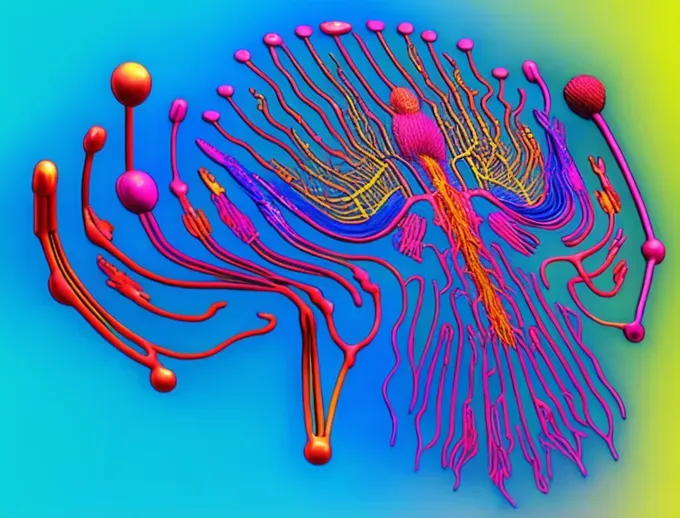
Lineages
Cranial Neural Crest Lineage
Contributing to the formation of craniofacial structures, the cranial neural crest lineage is crucial in neural crest development. These cells are responsible for the development of cranial nerves, connective tissue, and smooth muscle in the head, emphasizing neuronal differentiation and the dorsolateral pathway. Moreover, their pivotal role in the development of the skull and face highlights their significance in germ layer formation and cell lineage differentiation. Understanding the cranial neural crest lineage is critical for studying craniofacial abnormalities, including Treacher-Collins syndrome, as it provides insights into the etiology of such conditions.
Research on cranial neural crest cells not only contributes to our understanding of neural development but also sheds light on related disorders, such as the second pharyngeal arches and Schwann cell development. Studying the cranial neural crest lineage in model organisms like Xenopus Laevis and chick embryos, along with human studies in the United States, has provided valuable information about de novo neural crest gene expression and its implications in embryonic development.
Trunk Neural Crest Lineage
Contributing to the formation of the peripheral nervous system, the trunk neural crest lineage plays a crucial role in autonomic nervous system development. Giving rise to sympathetic and sensory ganglia along the vertebral column, these cells are vital for studying peripheral nervous system development. Research on trunk neural crest cells provides valuable insights into the development of the peripheral nervous system, shedding light on neuronal differentiation and Schwann cell formation. Understanding the trunk neural crest lineage is imperative for comprehending neural development and its relevance to clinical conditions such as Treacher-Collins syndrome, which affects the second pharyngeal arches. Studies on chick embryos and Xenopus Laevis have elucidated the dorsolateral pathway taken by trunk neural crest cells during migration, contributing to our understanding of cell lineage and de novo neural crest gene expression in the United States and worldwide.
Vagal and Sacral Neural Crest Lineage
The enteric nervous system is derived from the vagal and sacral neural crest lineages, contributing to the neural network in the gastrointestinal tract. These cells play a crucial role in the development of gut motility, making them vital for studying gastrointestinal disorders. Research on these neural crest cells provides valuable insights into understanding the development of the enteric nervous system and its related functions.
The formation and development of the enteric nervous system from the vagal and sacral neural crest lineages involve complex processes of cellular differentiation and migration. Understanding the neural crest development and cell lineage within the germ layer has revealed essential mechanisms underlying the formation of this critical part of the nervous system. Studies in various model organisms such as Xenopus Laevis and chick embryos, as well as research in the United States and internationally, have significantly contributed to unravelling the molecular and cellular events that govern the de novo generation and differentiation of vagal and sacral neural crest cells. This knowledge also extends to clinical relevance in conditions such as Treacher-Collins syndrome, highlighting the importance of comprehending the neural crest lineage in neural development.
Cardiac Neural Crest Lineage
Contributing to the development of the heart and major blood vessels, cardiac neural crest cells play a crucial role in the formation of the cardiac outflow tract and aortic arches. Defects in cardiac neural crest lineage can lead to congenital heart defects, making it vital to understand their role in studying heart development. Research on these cells provides valuable insights into the formation of the cardiovascular system, shedding light on neural crest development and cell lineage. The study of cardiac neural crest cells is essential for understanding neuronal differentiation and its relevance to heart health. Additionally, understanding the impact of these cells on heart development offers crucial information for addressing congenital heart conditions such as Treacher-Collins syndrome and identifying potential therapeutic targets. The interplay of neural crest gene expression and signalling pathways in cardiac neural crest cells highlights the complexity of neural development, offering opportunities to explore new territories in regenerative medicine and further our understanding of the genetic basis of congenital heart diseases.
The Evolutionary Significance of Neural Crest Cells
Neural crest cells, with their critical role in vertebrate evolution, have significantly influenced the development of connective tissue and gene expression patterns. Their involvement in the formation of the middle ear and smooth muscle is essential for embryonic development. This developmental process is intricately linked to neural crest development, originating from the neural folds of the neural ectoderm, a germ layer. Studies in Xenopus Laevis and chick embryos in the United States have revealed key insights into the neuronal differentiation and cell lineage of neural crest cells. Additionally, their contribution to the dorsolateral pathway and the second pharyngeal arches provides valuable information about their evolutionary significance. The relevance of neural crest gene expression has been observed in conditions like Treacher-Collins syndrome, highlighting the impact of these cells on human health.
Conclusion
In conclusion, understanding neural crest formation is crucial for comprehending the intricate processes of embryonic development and the clinical implications associated with it. Neural crest cells play a vital role in various developmental processes, including the formation of different lineages and the induction of specific disorders. Over time, our understanding of neural crest cells has evolved, shedding light on their evolutionary significance and the complex mechanisms involved in their migration and specification. By delving deeper into neural crest formation, we can uncover new insights into human development and potentially discover therapeutic interventions for related conditions. The study of neural crest cells continues to be a fascinating area of research, offering exciting possibilities for both scientific advancements and medical breakthroughs.
FAQs
What is the Neural Crest in Humans and The Functions?
The neural crest is a pivotal structure in vertebrate embryonic development, often referred to as the fourth germ layer due to its critical role and diverse potential. Originating from the embryonic ectoderm, neural crest cells (NCCs) are specified at the border of the neural plate and non-neural ectoderm after gastrulation. These cells undergo an epithelial-to-mesenchymal transition, delaminating from the neuroepithelium and migrating throughout the embryo to give rise to a wide array of cell types and structures[3].
Functions and Derivatives
The neural crest can be categorized into four main functional domains, each contributing to different aspects of vertebrate anatomy and physiology:
1. Cranial (Cephalic) Neural Crest: These cells migrate into the facial region and pharyngeal arches, differentiating into craniofacial mesenchyme, cartilage, bone, cranial neurons, glia, and connective tissues. They are responsible for forming the facial skeleton, parts of the middle ear and jaw, thymic cells, odontoblasts for tooth development, and more[1].
2. Trunk Neural Crest: Cells from this region follow one of two major pathways. Some become pigment-synthesizing melanocytes, migrating into the ectoderm. Others contribute to the formation of sensory neurons, sympathetic and parasympathetic neurons, adrenomedullary cells, and glia[1].
3. Cardiac Neural Crest: A subset of the cranial crest, these cells contribute to the development of the heart's outflow tract, playing a crucial role in cardiovascular development[5].
4. Vagal and Sacral Neural Crest: These cells contribute to the enteric nervous system, which governs the function of the gastrointestinal tract[5].
Importance and Clinical Significance
The neural crest's versatility and multipotency make it a key area of study in developmental biology and medicine. Abnormal development of neural crest cells can lead to neurocristopathies, a group of disorders that include conditions like frontonasal dysplasia, Waardenburg–Shah syndrome, and DiGeorge syndrome[3]. Understanding neural crest development is not only crucial for insights into vertebrate evolution but also for potential therapeutic applications, including tissue regeneration and modelling diseases using human pluripotent stem cell-derived neural crest cells[4].
In summary, the neural crest is a transient, multipotent population of cells arising from the embryonic ectoderm, crucial for the development of diverse structures in vertebrates. Its cells migrate and differentiate into a wide range of cell types, contributing significantly to the anatomical and functional complexity of vertebrates.
How Has Our Understanding of Neural Crest Cells Evolved?
Our understanding of neural crest cells has evolved significantly over time. Through extensive research, we now know the regulatory network that governs their specification and the critical signalling pathways involved in their migration. Animal studies have further enhanced our knowledge of neural crest induction. This understanding has important implications for birth defects and the development of the extracellular matrix[12].
Citations:
[1] https://www.ncbi.nlm.nih.gov/books/NBK10065/
[2] https://www.sciencedirect.com/topics/medicine-and-dentistry/neural-crest-cell
[3] https://en.wikipedia.org/wiki/Neural_crest
[4] https://www.frontiersin.org/articles/10.3389/fnmol.2019.00039/full
[5] https://www.ncbi.nlm.nih.gov/books/NBK547700/
[6] https://www.nature.com/articles/cr201211
[7] https://www.sciencedirect.com/topics/agricultural-and-biological-sciences/neural-crest
[8] https://www.britannica.com/science/neural-crest
[9] https://embryo.asu.edu/pages/neural-crest
[10] https://www.merriam-webster.com/dictionary/neural%20crest
[11] https://www.sciencedirect.com/topics/medicine-and-dentistry/neural-crest
[12] https://www.dictionary.com/browse/neural-crest
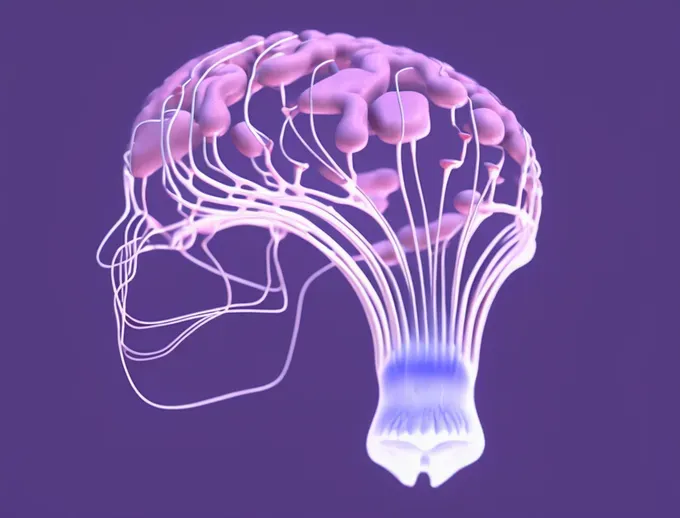
Thanks For Reading!
This Article Was Written by AI and A Human
Research: Perplexity AI
Artwork: KREA AI
Content Editing: Notion AI, Lex.page, and LearningTime AI
Built On: Groove
Proof-Reading and AI Wrangling: SHiNER The Human

